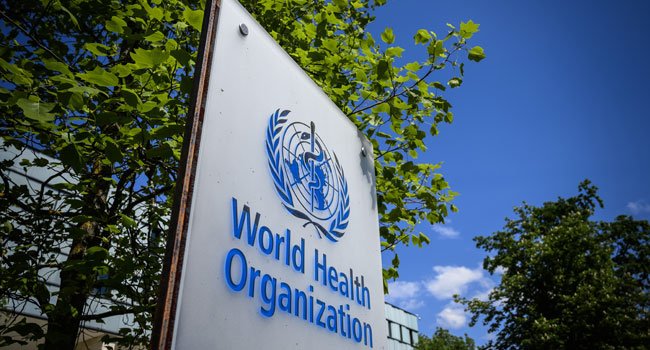The World Health Organization (WHO) has called for the stronger integration of eye care into national health systems, increased investment, and targeted strategies to improve access to quality vision services across African countries.
WHO Regional Director for Africa, Dr. Mohamed Janabi, made the call in a message on Wednesday to commemorate World Sight Day, which will be observed globally on October 9, 2025.
Janabi said the annual observance aims to raise public awareness about the importance of eye health and promote action to reduce preventable vision loss and blindness, particularly in low-resource settings.
He revealed that as of 2021, only 32 per cent of WHO Member States had developed national policies addressing vision loss and blindness — a gap he said reflects limited prioritization of eye health.
“This limited policy coverage reflects broader challenges in resource allocation and health planning for eye care,” Janabi noted.
“The existing levels of service coverage highlight the magnitude of unmet vision health needs.”
According to him, effective cataract surgery coverage in the African Region stands at just 26 per cent, meaning only one in four people who need surgery achieve a good visual outcome. Similarly, effective coverage for refractive error correction — such as with eyeglasses — is estimated at 30 per cent, showing that one in three people with visual impairment have access to proper vision correction.
“These figures underscore the urgent need for stronger health system integration, targeted investment, and people-centred strategies to ensure everyone can access quality eye care services,” he said.
Janabi stressed that good vision has a direct impact on well-being, education, productivity, and employment, while vision impairment remains a growing public health concern in Africa.
He acknowledged progress in reducing vision loss from diseases such as trachoma, vitamin A deficiency, and onchocerciasis, but warned that new challenges are emerging, including ageing populations, poor awareness, unhealthy diets, sedentary lifestyles, and the rise of noncommunicable diseases that increase the risk of cataracts and refractive errors.
To address these issues, Janabi highlighted global initiatives such as Vision 2020: The Right to Sight, which focused on scaling up affordable cataract services and strengthening national capacities to eliminate preventable blindness through improved infrastructure and skilled manpower.
He also cited the World Health Assembly Resolution WHA74(12) adopted in 2021, which urged Member States to implement integrated, people-centred eye care and achieve global coverage targets for refractive errors and cataracts by 2030.
“Under the resolution, countries are expected to increase effective refractive error coverage by 40 percentage points and cataract surgery coverage by 30 percentage points before 2030,” he explained.
Janabi further mentioned SPECS 2030, a WHO initiative launched in June 2024 to ensure universal access to affordable, quality refractive services by the end of the decade. The initiative seeks to improve service delivery, reduce costs, expand the eye care workforce, raise awareness, and strengthen national surveillance and data systems.
“So far, eight African Member States have begun implementing SPECS 2030, with some already developing national workplans, while others are still in the early planning stages,” he said.
Despite these efforts, Janabi noted that major challenges remain in ensuring equitable access to sustainable eye care services, especially in underserved communities across the continent.
He called for intensified action in line with Resolution WHA78.7, which urges countries to integrate sensory care into health benefit packages and ensure sustained funding for such interventions.
“Countries are encouraged to expand training for eye health professionals, include sensory health indicators in national data systems, and develop inclusive strategies guided by WHO recommendations,” he added.
Janabi urged governments to use platforms like World Sight Day to promote early detection, reduce stigma, and empower people living with vision and sensory impairments.
He also encouraged the adoption of WHO tools, including situation analysis frameworks, data instruments, and the WHO Eyes mobile app for vision screening, to support effective policy planning and advocacy.


